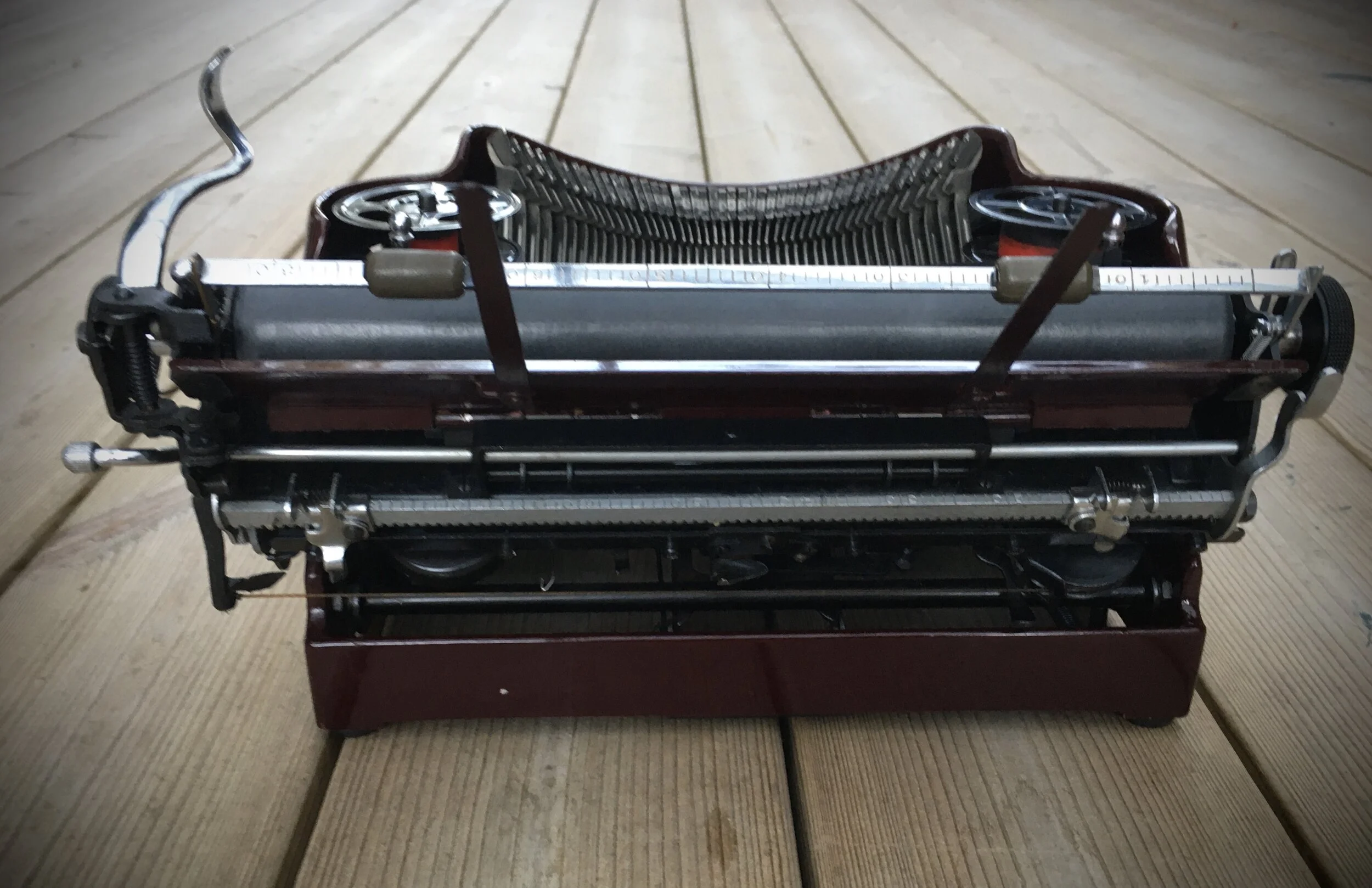Cherry-red Urania, one of its kind
I remember that to acquire this machine I had to stand rather unusually hard fight on the auction. Not that there was big money involved but most other machines I own had no more willing buyers than me.
This Urania was different: there were folks willing to get her. I’m glad that in the end I won and here she is.
Machine came with - quite rare these days - original instruction and a small bag with spare screws!
As most old machines she had standard problems to address:
dusty & dirty mechanism
hardened platen
deformed paper-feed rollers
What was saved to her was WD-40 and thanks for that!
I removed the panels for cleaning and to remove the platen. That caused me a bit of trouble as the construction is not quite standard. That is exciting but sometimes frustrating to the point that hammer comes into hand if things don’t move the way they are expected.
Luckily I inhibited the impulse of hammering and finally lifted the platen. The trick was that most things in this assembly are the other way round, compared to standard machines.
No, this is not a machine for left-handers, rather opposite. It is just the way herr Clemens Muller thought is the best regarding functionality. And I admit that it works very well - with line & row advance on the right side I just use my stronger hand instead of left hand to make the move. Like most people on the planet.
It just takes a while to switch from the standard.
Unlike other machines the paper-feed rollers don’t just pop-out free after removing the paper deflector. They form a small subassembly, with springy connector in between. Smart - this way the system is prepared to any irregularities in fed material.
Flat spots, of course, disable the mechanism so I needed to address that.
The platen on this machine is so hard that it feels like plastic. Luckily it is not cracked - with wooden core inside that would be a catastrophe.
Surprisingly, the bigger rollers were still spongy and grippy. If not for the flat spots I would be happy with them. Smaller, front rollers were totally gone.
As with most non-standard machines one faces incompatibility problems. My stock of rubber hoses does not cover dimensions needed to replicate these rollers. However, given that I want to cover the platen with bicycle inner-tube - thus increasing its diameter - it will not harm if I reduce the diameter of paper rollers a bit. After all they are spring-loaded and will anyway (to some extend) get into the platen. The only concern would be line spacing - with platen increased too much single-line space would become too tight. However - the inner tube I mount is circa 0,5mm thick after sanding. That should not affect anything too badly.
Smaller rollers were far too gone so I replaced them with silicone tubing. Not epoch-correct but works like a charm.
Bigger rollers, still grippy, were turned into smaller diameter, almost entirely removing the flat spots.
Left roller assembly after turning, the right one is yet to be reworked.
Standard cleaning followed - but no chemical treatment was needed. Keys were cleaned and I straightened some inverted key-legends.
Unfortunately the trick with gripping the glass with a sharp compass and turning it to correct the direction did not work here. It is a real glass, not celluloid, it just didn’t want to move. I had to disassembly these keys to get things straight. Risky operation with these soft-metal tabs underneath - easy to break them.
I wish I had key-punching tool like repairmen had in the old days.
As this machines has ribbon-spools exposed I wanted to substitute ugly, plastic spools with something more classy. Luckily Olivetti spools which I traded with Charles fit the bill!
First I tried using carbon tape which was on these spools. The result was not impressive - it seems that the ribbon advance is too slow on this machine to take advantage of so thin ribbon. Characters were crowded on the tape, yielding bad quality text.
A bit disappointed I decided to keep the spools but rewind the precious carbon tape onto other spools. There are many meters of this tape winded onto the spool so doing it by hand was too boring. Drill machine with simple silicone adapter solved the problem in 2 minutes.
Rewinded with fresh, 2-colour ribbon the machine types perfectly.
Inner-tube covered platen works fine and looks quite OK. Good enough for me at least - I can now use the machine without waking up my neighbours.
Carriage locking and escapement release, for transporting the machine, is on the right side. Nice and sturdy although not as robust as on machines from later era. It can be easily tripped if the carriage is pushed to the right so I would not rely on it when shipping the machine in a package.
And so is Urania ready for use!




